theartsdesk in Reykjavík: Nocturnes for Midsummer | reviews, news & interviews
theartsdesk in Reykjavík: Nocturnes for Midsummer
theartsdesk in Reykjavík: Nocturnes for Midsummer
Pianist-curator Víkingur Ólafsson goes wandering with friends
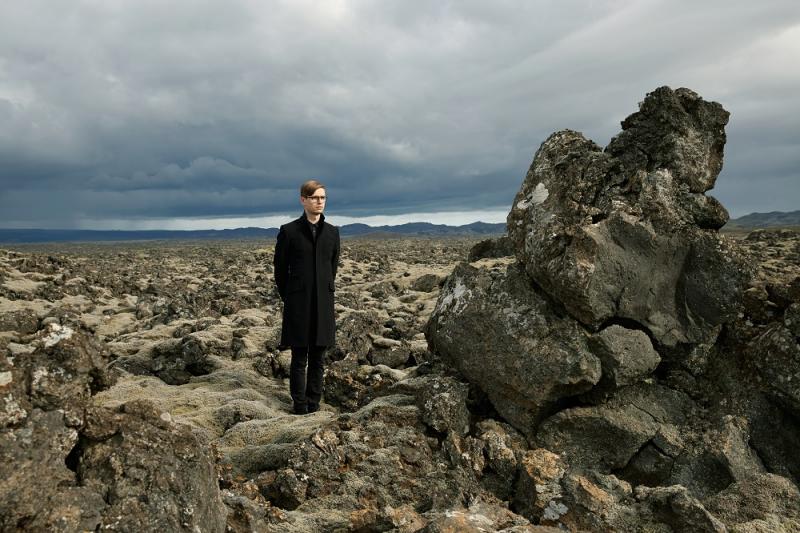
After a grey start, there was a spectacular sunset around midnight on the second of my two days in Reykjavik. It's what brings one of Iceland's most brilliant younger-generation talents, pianist Víkingur Ólafsson (and yes, he's worked with Björk), back to his homeland every June. He launched Reykjavík Midsummer Music in 2012, the first full year of programming at Olafur Eliasson's ever amazing Harpa concert halls and conference centre on the harbour.
Take the first evening of this year's festival. There couldn't be too many regrets that we moved from one interior – Harpa’s Norðurljós Recital Hall - to another, tiny Mengi up the hill, when the weather outside remained grey after the rains, and in any case everything was connected. You just had to imagine infinite space, which wasn't difficult given the choice of repertoire. “Wanderer” was the 2016 theme, into which framework every work may fit according to Ólafsson’s imagination, though there’s no need to press the case in each instance.
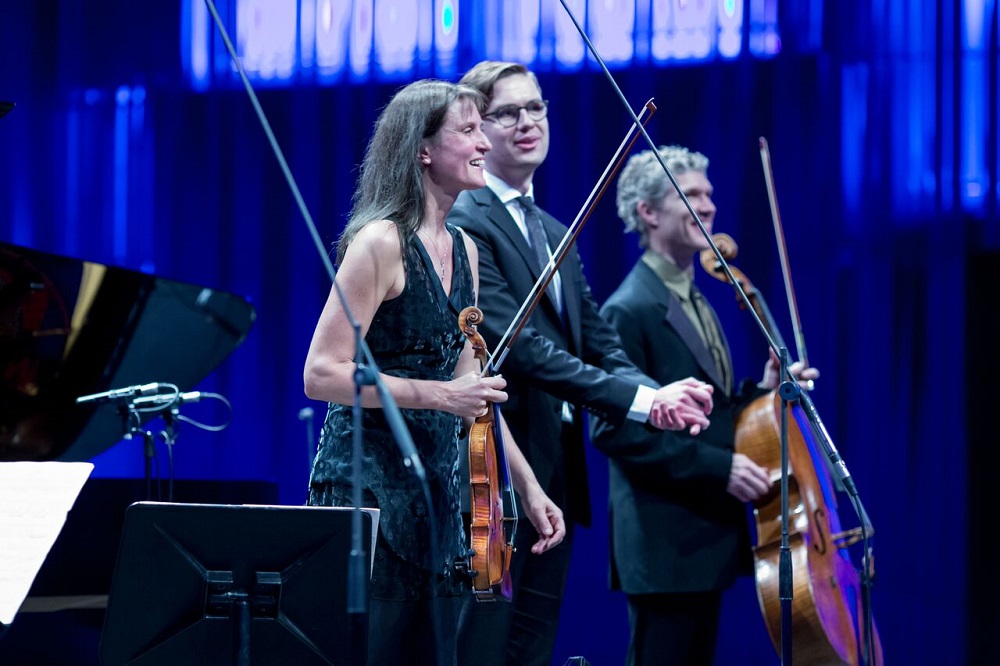
Sufficient it was that in Thursday night’s interstellar wanderings, we began at 8pm with the ravishments of Ravel’s Introduction and Allegro and ended at midnight with Debussy’s Sonata for flute, viola and harp. The centrepoint was a majestic, slightly cool performance of Ravel’s Piano Trio with Ólafsson, crystalline in the French repertoire, joined by Viktoria Mullova and her partner, cellist Matthew Barley. Ólafsson (pictured above with them) had struck a deal: he played with them in Germany not long before, would they return the compliment in his homeland? They did, and stayed for longer, meeting up with Ólafsson again in the Schubert Second Piano Trio the following night.
Cosmic wonders were expressed in two unforgettable performances. Ólafsson premiered a new piano piece by Skúli Sverrisson, Miranda, about the absence of gravity in outer space. It struck the listener as hauntingly simple, and a bit like Ravel’s "Ondine" in Gaspard de la Nuit in its interplay of left-hand melody and right-hand incandescence. But the upper-register starriness, Ólafsson assured me, was a subtly shifting pattern that proved the very devil to get absolutely right. It didn’t sound it. And why have I never heard Kaija Saariaho’s Lichtbogen before? It’s a relatively early work from 1986, a response to the Northern Lights, which you wouldn’t need to know to register its extreme refinements, the treble on the threshhold of what the human ear can take (the ensemble conducted by Bjarni Frímann Bjarnason pictured below).
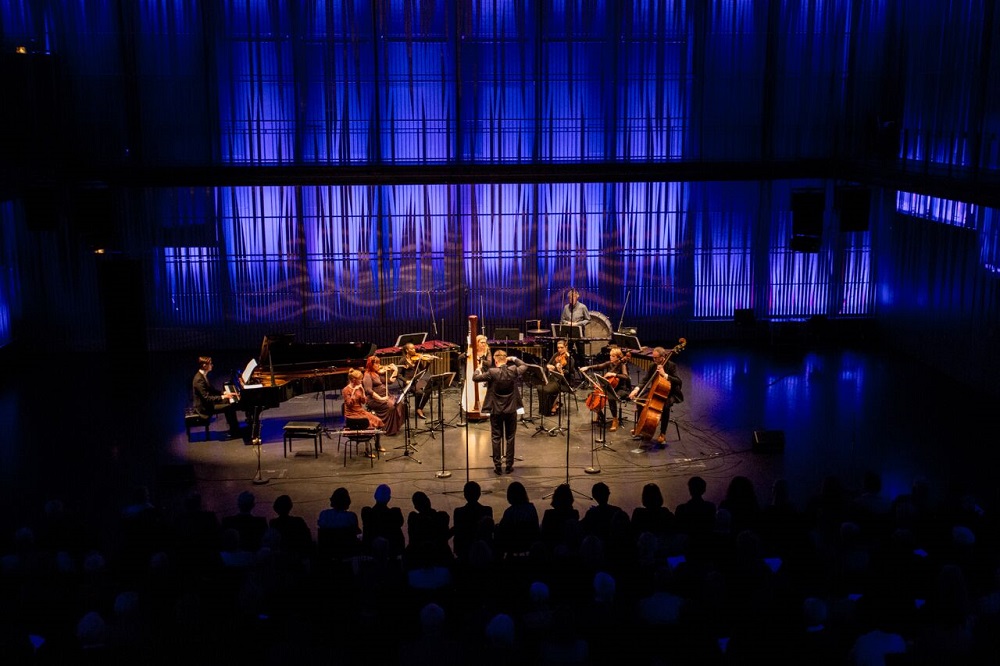
Like the first Ravel piece, it seemed to float in the marvellous acoustics of Norðurljós, bathed in purple rather than the Aurora Borealis colours I witnessed there at the Dark Music Days festival two Januaries earlier (after all, the hall does take its name from the Northern Lights, just as the main auditorium, Eldborg, pays homage to a caldera I've climbed and is bathed in lava red). As for the all-contemporary programmes, a packed audience of all ages, mostly Icelandic, came along to satisfy various curiosities – not bad for a national population of 330,000. Ólafsson, incidentally, is well known in Iceland, not least because he presented a TV programme. The three girls with whom I shared a lift back from the old parliament site and rift valley of Þingvellir on the Friday afternoon all knew him.
The late-night trio-plus programme, in what must be called a space rather than a venue, homed in on the extraordinary talents of five of the players in an impressive line-up. Symmetry in the shape of Takemitsu’s And then I knew ‘twas Wind first, Debussy’s Sonata last, gave the odd impression that Debussy took from Takemitsu for some of his sounds, rather than the other way round. I’ve never heard a more supernaturally beautiful sound from a viola than the one Jennifer Stumm made at the start of the Debussy.
In between, clarinettist Arngunnur Árnadóttir managed the near-silences of Messiaen’s Abîme des oiseaux from the Quatuor pour le fin du temps as ineffably as I’ve ever heard, and Ólafsson gave a charming introduction – he should speak more throughout the festival – to Takemitsu’s singular transcription of Lennon and McCartney’s Golden Slumbers, telling of his troubles in tracking it down. He’d seen a veteran Japanese pianist playing it on YouTube, but couldn’t extract the manuscript from Japan owing to copyright wrangles. So he transcribed it by ear. What a magical couple of minutes of suspensions and consonances, again touching on the outer reaches of space between the standard lines of the song.

If only I could have been in Reykjavík for the full four days of the festival – more Messiaen birdsong called in Aldeburgh, a once in a lifetime chance – I would no doubt have got to know the players better. Ólafsson had spanned the decades in his choices of performers. The youngest, generously championed, was multi-talented Bjarni Frímann Bjarnason, whose piano-playing and conducting we witnessed, but not his skill on the viola nor his composing. The oldest had to be Ólafsson’s teacher at the Juilliard School, 84-year-old Jerome Lowenthal, a disciple of Alfred Cortot among others. He came with his partner Ursula Oppens (pictured above at the harmonium with Arngunnur Árnadóttir and Melkorka Ólafsdóttir), whom I remember playing the Elliott Carter Piano Concerto in Edinburgh in the 1980s.
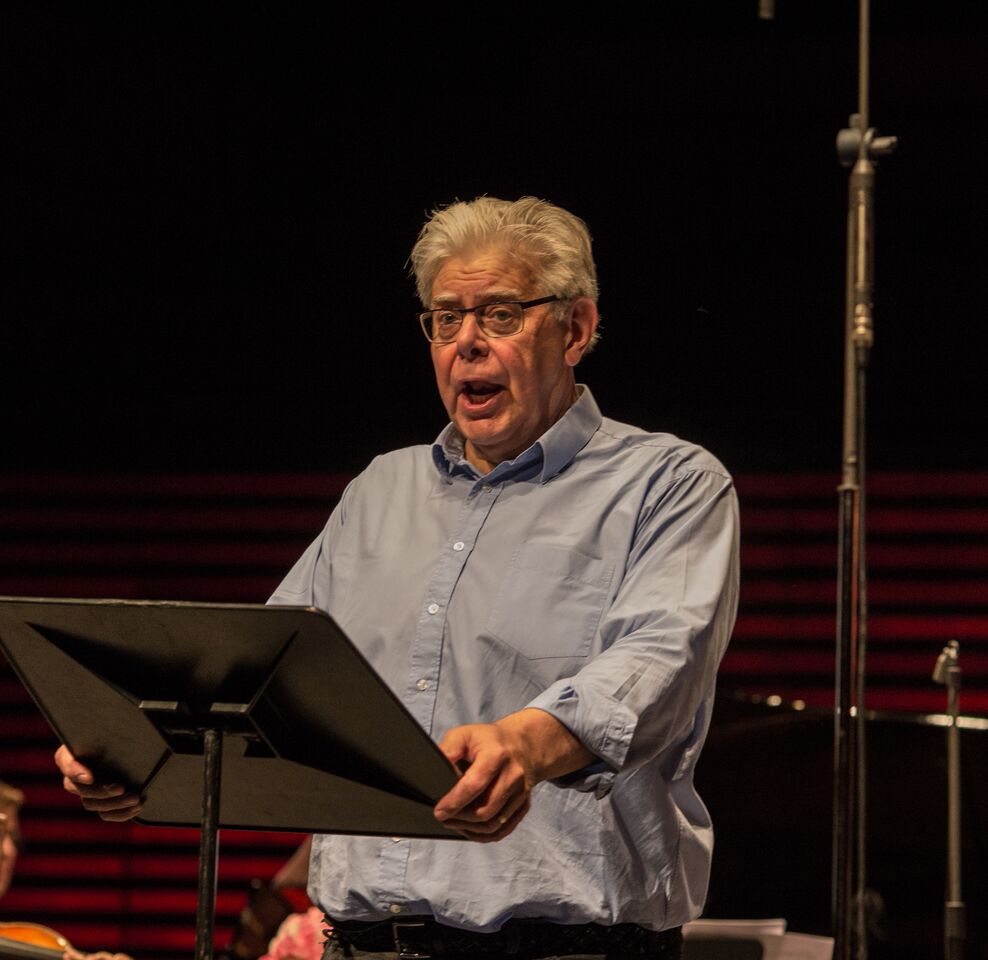 Lowenthal and Oppens were to play a major part in one of the programmes I couldn’t stay for (Ives, Cage, Bartók – whose Out of Doors in Lowenthal’s recording Ólafsson insisted I hear – and Crumb). Oppens did take a discreet role on the harmonium in Schoenberg’s chamber arrangement of Mahler’s Lieder eines fahrenden Gesellen on Friday evening in the Eldborg auditorium, a space perhaps rather large for chamber musicians. The astonishment here was Kristinn Sigmundsson’s Lieder-singing mastery (pictured right). I’ve seen him as Mozart’s Commendatore and in various Wagner roles, but who outside Iceland knew that this is one of the great song performers?
Lowenthal and Oppens were to play a major part in one of the programmes I couldn’t stay for (Ives, Cage, Bartók – whose Out of Doors in Lowenthal’s recording Ólafsson insisted I hear – and Crumb). Oppens did take a discreet role on the harmonium in Schoenberg’s chamber arrangement of Mahler’s Lieder eines fahrenden Gesellen on Friday evening in the Eldborg auditorium, a space perhaps rather large for chamber musicians. The astonishment here was Kristinn Sigmundsson’s Lieder-singing mastery (pictured right). I’ve seen him as Mozart’s Commendatore and in various Wagner roles, but who outside Iceland knew that this is one of the great song performers?
Even throughout the range, with no need for falsetto at the very top of the range, ideally relaxed and using minimal gesture to express emotions, Sigmundsson drew us at the start of the programme’s second half with wandering – not meandering – songs by Schumann and Wolf. He and Ólafsson, an exemplary Lieder partner, took us from the intimacy of Schumann’s “In der Fremde” to the rampage of Wolf’s “Feuerreiter”, its fiendish piano part holding no fears for Ólafsson. Mahler’s Wayfarer Songs are a stretch at the top of the register even for a standard baritone, so Ólafsson had transposed them down a third, but they still sounded idiomatic, the heartbreak at the end of the second and fourth songs ineffably done.
So it was out to witness an exceptional sunset, and eventually to take a leisurely stroll in the afterglow back to the hotel on the other side of Reykjavík’s domestic airport, where the shrieking, dive-bombing redshanks had fallen silent but there was still birdsong at 12.40am. At 3.30am on Sunday morning I would be in a different haunting landscape, the marshes of Snape, for the dawn chorus, but there’s nowhere in the world like Iceland outside its capital city (a long-postponed wish, to see where the North American and Eurasian tectonic plates are pulling apart at Þingvellir, was finally realised on the last full day). No need for encouragement to return for Reykjavík Midsummer Music next year – and thanks to our discussion about old masters, 75-year-old pianist İdil Biret should be guest of honour in 2017. How typical of Ólafsson’s receptivity to ideas, and his energy in realising them.
The future of Arts Journalism
You can stop theartsdesk.com closing!
We urgently need financing to survive. Our fundraising drive has thus far raised £49,000 but we need to reach £100,000 or we will be forced to close. Please contribute here: https://gofund.me/c3f6033d
And if you can forward this information to anyone who might assist, we’d be grateful.

Subscribe to theartsdesk.com
Thank you for continuing to read our work on theartsdesk.com. For unlimited access to every article in its entirety, including our archive of more than 15,000 pieces, we're asking for £5 per month or £40 per year. We feel it's a very good deal, and hope you do too.
To take a subscription now simply click here.
And if you're looking for that extra gift for a friend or family member, why not treat them to a theartsdesk.com gift subscription?
more Classical music
 Jansen, LSO, Pappano, Barbican review - profound and bracing emotional workouts
Great soloist, conductor and orchestra take Britten and Shostakovich to the edge
Jansen, LSO, Pappano, Barbican review - profound and bracing emotional workouts
Great soloist, conductor and orchestra take Britten and Shostakovich to the edge
 Jakub Hrůša and Friends in Concert, Royal Opera review - fleshcreep in two uneven halves
Bartók kept short, and a sprawling Dvořák choral ballad done as well as it could be
Jakub Hrůša and Friends in Concert, Royal Opera review - fleshcreep in two uneven halves
Bartók kept short, and a sprawling Dvořák choral ballad done as well as it could be
 Hadelich, BBC Philharmonic, Storgårds, Bridgewater Hall, Manchester review - youth, fate and pain
Prokofiev in the hands of a fine violinist has surely never sounded better
Hadelich, BBC Philharmonic, Storgårds, Bridgewater Hall, Manchester review - youth, fate and pain
Prokofiev in the hands of a fine violinist has surely never sounded better
 Monteverdi Choir, ORR, Heras-Casado, St Martin-in-the-Fields review - flames of joy and sorrow
First-rate soloists, choir and orchestra unite in a blazing Mozart Requiem
Monteverdi Choir, ORR, Heras-Casado, St Martin-in-the-Fields review - flames of joy and sorrow
First-rate soloists, choir and orchestra unite in a blazing Mozart Requiem
 Cho, LSO, Pappano, Barbican review - finely-focused stormy weather
Chameleonic Seong-Jin Cho is a match for the fine-tuning of the LSO’s Chief Conductor
Cho, LSO, Pappano, Barbican review - finely-focused stormy weather
Chameleonic Seong-Jin Cho is a match for the fine-tuning of the LSO’s Chief Conductor
 Classical CDs: Shrouds, silhouettes and superstition
Cello concertos, choral collections and a stunning tribute to a contemporary giant
Classical CDs: Shrouds, silhouettes and superstition
Cello concertos, choral collections and a stunning tribute to a contemporary giant
 Appl, Levickis, Wigmore Hall review - fun to the fore in cabaret and show songs
A relaxed evening of light-hearted fare, with the accordion offering unusual colours
Appl, Levickis, Wigmore Hall review - fun to the fore in cabaret and show songs
A relaxed evening of light-hearted fare, with the accordion offering unusual colours
 Lammermuir Festival 2025, Part 2 review - from the soaringly sublime to the zoologically ridiculous
Bigger than ever, and the quality remains astonishingly high
Lammermuir Festival 2025, Part 2 review - from the soaringly sublime to the zoologically ridiculous
Bigger than ever, and the quality remains astonishingly high
 BBC Proms: Ehnes, Sinfonia of London, Wilson review - aspects of love
Sensuous Ravel, and bittersweet Bernstein, on an amorous evening
BBC Proms: Ehnes, Sinfonia of London, Wilson review - aspects of love
Sensuous Ravel, and bittersweet Bernstein, on an amorous evening
 Presteigne Festival 2025 review - new music is centre stage in the Welsh Marches
Music by 30 living composers, with Eleanor Alberga topping the bill
Presteigne Festival 2025 review - new music is centre stage in the Welsh Marches
Music by 30 living composers, with Eleanor Alberga topping the bill
 Lammermuir Festival 2025 review - music with soul from the heart of East Lothian
Baroque splendour, and chamber-ensemble drama, amid history-haunted lands
Lammermuir Festival 2025 review - music with soul from the heart of East Lothian
Baroque splendour, and chamber-ensemble drama, amid history-haunted lands
 BBC Proms: Steinbacher, RPO, Petrenko / Sternath, BBCSO, Oramo review - double-bill mixed bag
Young pianist shines in Grieg but Bliss’s portentous cantata disappoints
BBC Proms: Steinbacher, RPO, Petrenko / Sternath, BBCSO, Oramo review - double-bill mixed bag
Young pianist shines in Grieg but Bliss’s portentous cantata disappoints

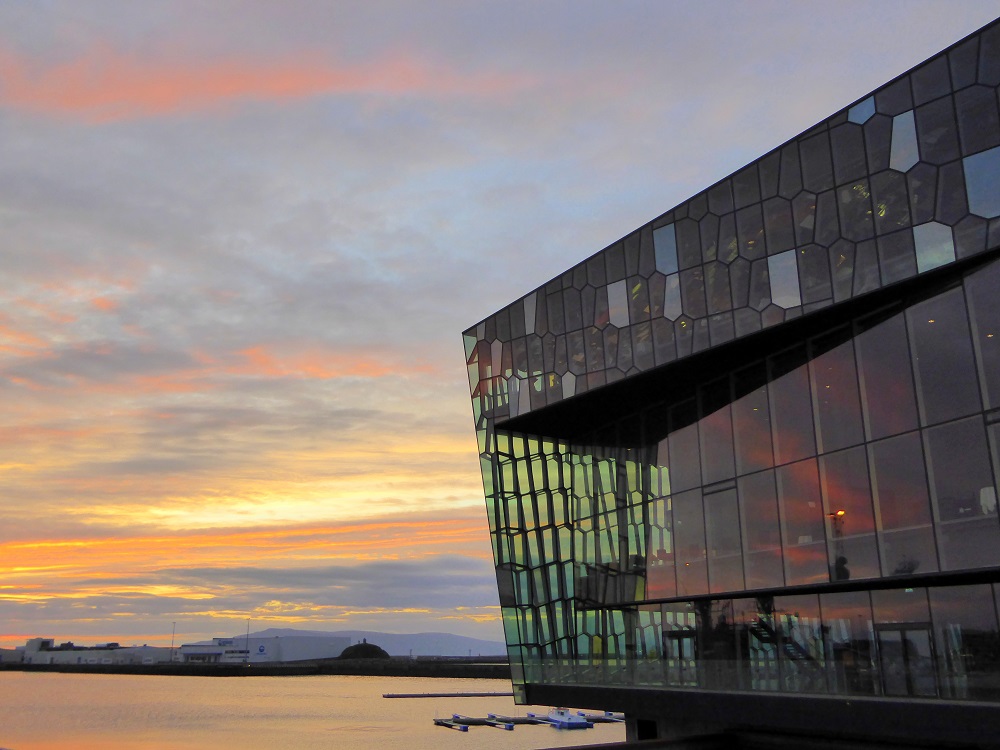
Add comment